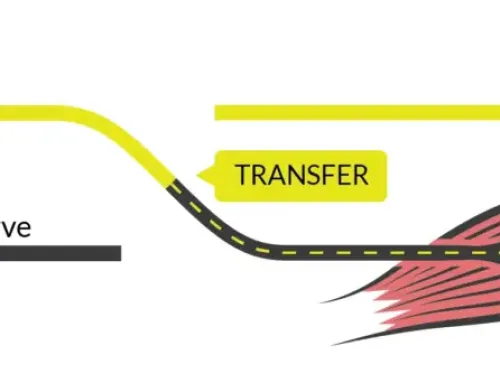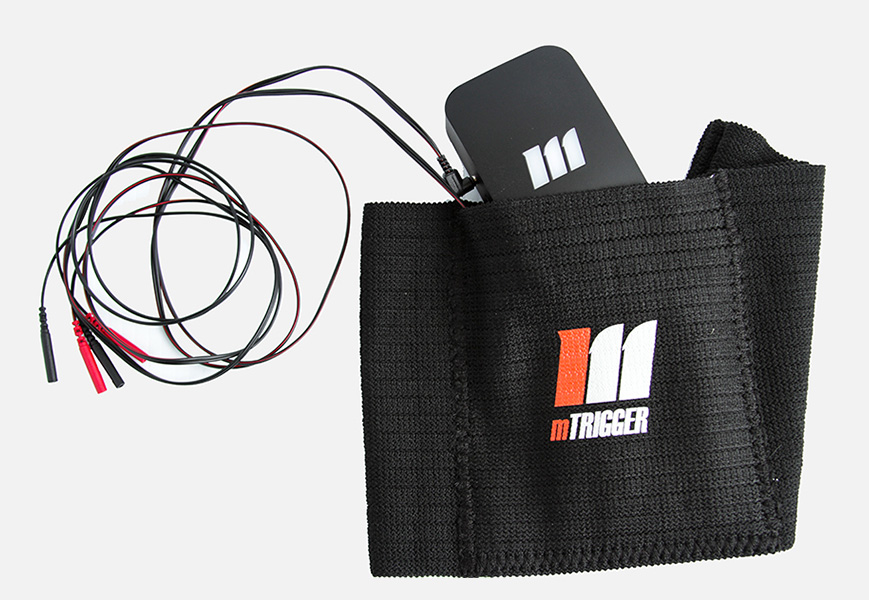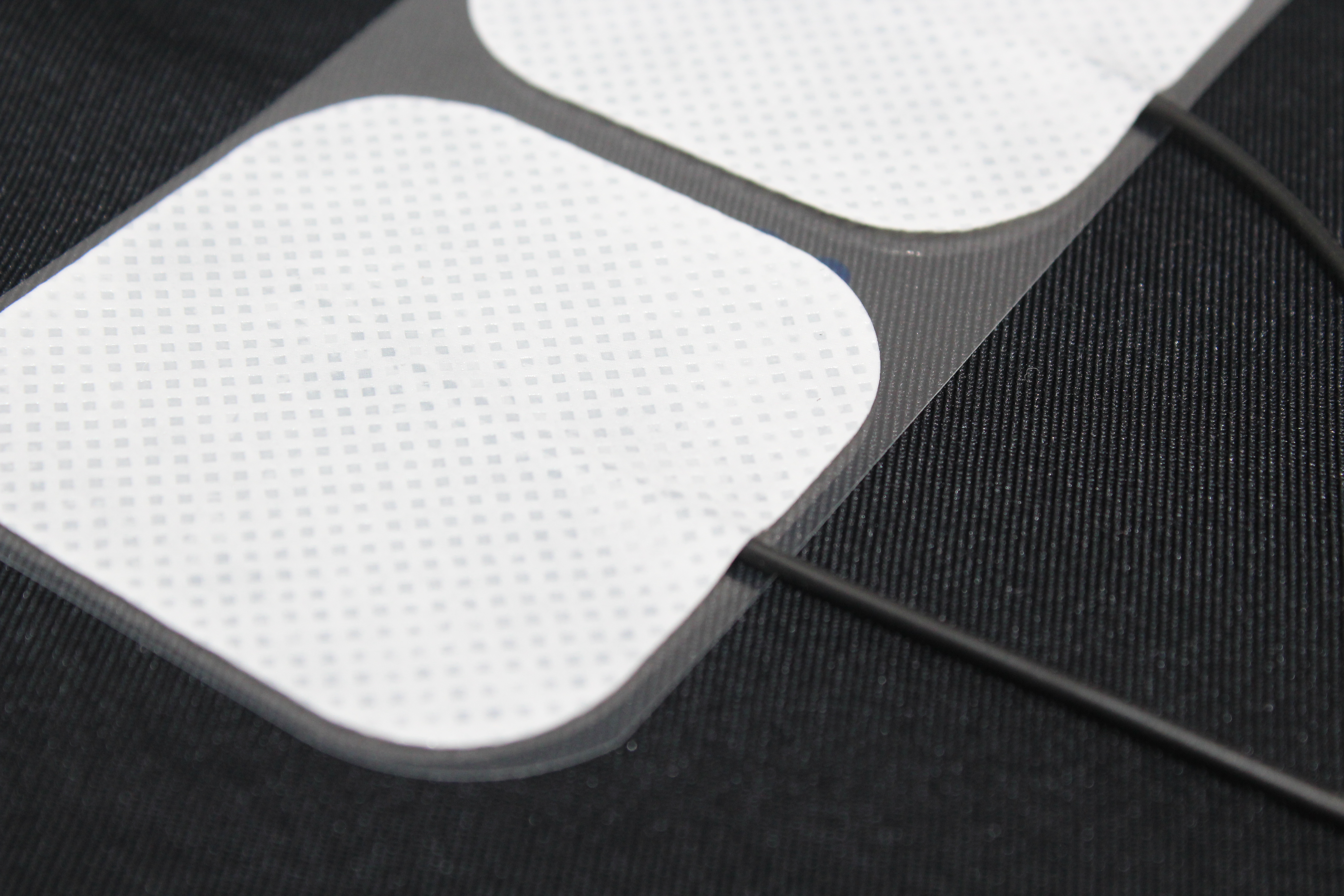Biofeedback is a tool that uses myoelectrical signals to help retrain muscles. It can be used to either increase or reduce muscle activity depending on the goal and diagnosis. Over the last decade, many studies have supported the use of biofeedback for musculoskeletal and neurological rehabilitation. Although research originally focused on the quadriceps and knee, evidence has since expanded to include the use of biofeedback for other orthopedic conditions and injuries. Here we take a deeper look into the evolution and expanded use of biofeedback over the last several decades.
KNEE
Back in 1990-91, Draper and Ballard began investigating the effects of electromyographic biofeedback on quad function following ACL reconstruction. (1,2) They found that biofeedback was more effective in facilitating the recovery of full active knee extension than electrical stimulation alone. These findings were supported by several other studies (found here, and here, here, and here.) and even extended to other common knee conditions.
After knee surgery, quad weakness and loss of neuromuscular firing are very common, sometimes for over 6 months. (7) Several studies have addressed the benefit of biofeedback on recovery following meniscectomy. Akkaya et al. found EMG-biofeedback to be effective at reducing time on crutches, increasing quadriceps recruitment, and speeding up the rehabilitation process. (8) Kirnap et all found improvements in range of motion (ROM), overall function, and max quadricep recruitment with biofeedback. (9) After meniscus repair, biofeedback was shown to help improve muscular control, coordination, and function during activities. (10) Benefits were even seen after total knee arthroscopy in gait and quality of life when biofeedback interventions were included in rehab. (6,11,12)
The most recent addition to the knee literature has been the support of EMG biofeedback for patellar femoral pain. The use of real time visual biofeedback was shown to improve the relative contraction strength of both vastus lateralis (VL) and vastus medialis obliques (VMO), subsequently enhancing activation during daily activities. (13) In a study by Alonazi et al, after just four weeks of a biofeedback guided rehabilitation program, young males with patellar femoral pain had less pain, improved strength, and long-term function. (14)
HIP
In the last decade, evidence for biofeedback has largely expanded beyond just the knee. More recently, studies on the hip have yielded promising results for the use of EMG biofeedback after total hip arthroscopy. In 2019, Doctors Soni and Samuel demonstrated a conventional rehabilitation program with the use of biofeedback produced superior outcomes compared to a conventional rehab program alone. (15)
ANKLE & FOOT
The main focus of biofeedback use in the ankle and foot has typically pertained to gait and stroke recovery. In this arena, it has been shown to improve strength, balance, and gait patterning. See studies here16 and here17. Additionally, a recent study by Kim and Uhm showed the effectiveness of biofeedback for improving balance and lower limb muscle in athletes with functional ankle instability. (18)
SHOULDER
The use of biofeedback has evolved to incorporate interventions that work to reduce activation or down regulate overactive muscle groups that often cause pain and dysfunction. Additional studies published on the shoulder have supported the use of EMG biofeedback for muscle patterning and rotator cuff activation, which help address conditions such as shoulder instability, impingement, and rotator cuff repairs. For instance, Lim et al found the use of visual EMG biofeedback to be a clinically effective training tool for increasing activation and strength of the infraspinatus muscle during specific exercises while reducing the use (substitution) of the posterior deltoid. (19) Scapular dyskinesis, or poor motor patterning, is an issue with many shoulder pathologies and a focus of all scapular strengthening programs. Recently in 2020, Du et al. demonstrated that the use of visual biofeedback can help improve muscle activation and control during overhead shoulder elevation. (20) Similarly, Huang et al. showed this improved scapular muscular balance during rehab exercise was beneficial for improving symptoms associated with shoulder impingement. (21)
NECK & BACK
Another innovative area of study for biofeedback has been its use for neck pain, headaches, posture, and back pain. The main focus for intervention in these studies has been utilizing visual biofeedback to reduce activation in over active muscle groups known to cause impairment. This study by Dellve et all shows successful treatment of neck pain with use of biofeedback for down regulating the upper trap. (22) In migraines, biofeedback was shown to help decrease frequency and use of medications. (23) EMG biofeedback-assisted relaxation techniques described by Reeves helped reduce the frequency of chronic tension headaches and recent studies have built off of Jones and Wolf’s 1980 study on EMG biofeedback training for low back pain. (24, 25) They found that biofeedback during standing, trunk movements, and movement patterns yielded improved range of motion, decreased pain levels and medication intake. (25)
sEMG biofeedback is a low-risk modality, with high levels of versatility and the ability to customize treatment to achieve functional goals faster. New evidence and studies encourage the use of EMG biofeedback as an effective and innovative treatment intervention.
References
- Draper V. Electromyographic biofeedback and recovery of quadriceps femoris muscle function following anterior cruciate ligament reconstruction. Phys Ther. 1990;70(1):11-17. doi:10.1093/PTJ/70.1.11
- Draper V, Ballard L. Electrical Stimulation Versus Electromyographic Biofeedback in the Recovery of Quadriceps Femoris Muscle Function Following Anterior Cruciate Ligament Surgery. Phys Ther. 1991;71(6):455-461. doi:10.1093/PTJ/71.6.455
- Bonnette S, DiCesare CA, Kiefer AW, et al. A Technical Report on the Development of a Real-Time Visual Biofeedback System to Optimize Motor Learning and Movement Deficit Correction. J Sports Sci Med. 2020;19(1):84. /pmc/articles/PMC7039015/. Accessed November 8, 2021.
- Queen RM, Peebles AT, Miller TK, et al. Reduction of Risk Factors for ACL Re-injuries using an Innovative Biofeedback Approach: Rationale and Design. Contemp Clin Trials Commun. 2021;22:100769. doi:10.1016/J.CONCTC.2021.100769
- Bodkin SG, Bruce AS, Hertel J, et al. Visuomotor therapy modulates corticospinal excitability in patients following anterior cruciate ligament reconstruction: A randomized crossover trial. Clin Biomech. 2021;81:105238. doi:10.1016/J.CLINBIOMECH.2020.105238
- Nakandala N. EMG-Biofeedback Therapy in Knee Rehabilitation: A Review. 2019.
- Glatthorn JF, Berendts AM, Bizzini M, Munzinger U, Maffiuletti NA. Neuromuscular function after arthroscopic partial meniscectomy. Clin Orthop Relat Res. 2010;468(5):1336-1343. doi:10.1007/S11999-009-1172-4
- Akkaya N, Ardic F, Ozgen M, Akkaya S, Sahin F, Kilic A. Efficacy of electromyographic biofeedback and electrical stimulation following arthroscopic partial meniscectomy: a randomized controlled trial: http://dx.doi.org/101177/0269215511419382. 2011;26(3):224-236. doi:10.1177/0269215511419382
- Kirnap M, Calis M, Turgut AO, Halici M, Tuncel M. The efficacy of EMG-biofeedback training on quadriceps muscle strength in patients after arthroscopic meniscectomy. 1224;118:1224.
- Oravitan M, Avram C. The Effectiveness of Electromyographic Biofeedback as Part of a Meniscal Repair Rehabilitation Programme. ©Journal Sport Sci Med. 2013;12:526-532. http://www.jssm.org. Accessed November 4, 2021.
- Zeni J, Abujaber S, Flowers P, Pozzi F, Snyder-Mackler L. Biofeedback to promote movement symmetry after total knee arthroplasty: A feasibility study. J Orthop Sports Phys Ther. 2013;43(10):715-726. doi:10.2519/JOSPT.2013.4657
- Levinger P, Zeina D, Teshome AK, Skinner E, Begg R, Abbott JH. A real time biofeedback using Kinect and Wii to improve gait for post-total knee replacement rehabilitation: A case study report. Disabil Rehabil Assist Technol. 2016;11(3):251-262. doi:10.3109/17483107.2015.1080767
- Ng GYF, Zhang AQ, Li CK. Biofeedback exercise improved the EMG activity ratio of the medial and lateral vasti muscles in subjects with patellofemoral pain syndrome. J Electromyogr Kinesiol. 2008;18(1):128-133. doi:10.1016/J.JELEKIN.2006.08.010
- Alonazi A, Hasan S, Anwer S, et al. Efficacy of Electromyographic-Biofeedback Supplementation Training with Patellar Taping on Quadriceps Strengthening in Patellofemoral Pain Syndrome among Young Adult Male Athletes. Int J Environ Res Public Health. 2021;18(9):4514. doi:10.3390/IJERPH18094514
- Krupa D, Soni MM. To compare the effectiveness of Neuromuscular electrical stimulation and Electromyography biofeedback in individuals following Total Hip arthroplasty. 2019;07. doi:10.18535/jmscr/v7i10.06
- Kim S, Cho H, Kim K, Lee S. Effects of ankle biofeedback training on strength, balance, and gait inpatients with stroke. J Phys Ther Sci. 2016;28(9):2596. doi:10.1589/JPTS.28.2596
- Aiello E, Gates DH, Patritti BL, et al. Visual EMG biofeedback to improve ankle function in hemiparetic gait. Annu Int Conf IEEE Eng Med Biol – Proc. 2005;7 VOLS:7703-7706. doi:10.1109/IEMBS.2005.1616297
- Kim J-H, Uhm Y-H. Effect of Ankle Stabilization Training Using Biofeedback on Balance Ability and Lower Limb Muscle Activity in Football Players with Functional Ankle Instability. J Korean Phys Ther. 2016;28(3):189-194. doi:10.18857/JKPT.2016.28.3.189
- Lim O-B, Kim J-A, Song S-J, Cynn H-S, Yi C-H. Section II-Exercise Physiology & Sports Medicine Effect of Selective Muscle Training Using Visual EMG Biofeedback on Infraspinatus and Posterior Deltoid. J Hum Kinet. 2014;44:83-90. doi:10.2478/hukin-2014-0113
- Du W-Y, Huang T-S, Chiu Y-C, et al. Single-Session Video and Electromyography Feedback in Overhead Athletes With Scapular Dyskinesis and Impingement Syndrome. J Athl Train. 2020;55(3):265. doi:10.4085/1062-6050-490-18
- Huang HY, Lin JJ, Guo YL, Wang WTJ, Chen YJ. EMG biofeedback effectiveness to alter muscle activity pattern and scapular kinematics in subjects with and without shoulder impingement. J Electromyogr Kinesiol. 2013;23(1):267-274. doi:10.1016/J.JELEKIN.2012.09.007
- Dellve L, Ahlstrom L, Jonsson A, et al. Myofeedback training and intensive muscular strength training to decrease pain and improve work ability among female workers on long-term sick leave with neck pain: a randomized controlled trial. doi:10.1007/s00420-010-0568-5
- Nestoriuc Y, Martin A. Efficacy of biofeedback for migraine: A meta-analysis. Pain. 2007;128(1-2):111-127. doi:10.1016/J.PAIN.2006.09.007
- Reeves JL. EMG-biofeedback reduction of tension headache. Biofeedback Self-regulation 1976 12. 1976;1(2):217-225. doi:10.1007/BF00998588
- Jones AL, Wolf SL. Treating chronic low back pain. EMG biofeedback training during movement. Phys Ther. 1980;60(1):58-63. doi:10.1093/PTJ/60.1.58








Leave A Comment